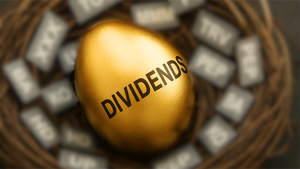
Among the many lightsabers across the Star Wars saga, few are as visually striking and symbolic as Kylo Ren’s weapon. With its unstable crimson blade and medieval-inspired crossguard design, the lightsaber of Ben Solo, who fell to the dark side and became Kylo Ren, represents chaos, rage, and unrefined strength. Unlike the elegance of a Jedi’s blade or the polished construction of Darth Vader’s weapon, Kylo Ren’s lightsaber is a flawed creation that mirrors its wielder’s inner conflict.
This article explores the design, origins, and significance of Kylo Ren’s lightsaber, tracing how it embodies his struggle between the light and dark sides of the Force and why it remains one of the most iconic weapons of the sequel trilogy.
Origins of Kylo Ren’s Weapon
Kylo Ren, born Ben Solo, was the son of Leia Organa and Han Solo, and the nephew of Luke Skywalker. Trained as a Jedi under his uncle, Ben’s fall to the dark side shattered his destiny. When he joined Supreme Leader Snoke and embraced the dark side, he forged a new lightsaber as a symbol of his new identity.
Unlike the refined weapons crafted by most Jedi, Kylo Ren’s saber was unstable and imperfect. His kyber crystal was cracked, and this flaw led to the violent, fiery appearance of his blade. To keep the weapon under control, he constructed a crossguard design, with lateral vents that released excess energy as two smaller blades.
This brutal creation was less about elegance and more about power—an outward projection of his inner turmoil.
Design and Construction
Kylo Ren’s lightsaber is unique in the galaxy due to its crossguard style and unstable energy output.
Hilt Design
- Material: Crafted from salvaged parts and crude assembly, lacking the precision of traditional Jedi craftsmanship.
- Length: Approximately 12 inches, with a bulky and industrial look.
- Crossguard Emitters: Two side vents extend from the main emitter at 90-degree angles, forming the saber’s iconic “crossguard” design.
- Grip: Unrefined, with visible wiring and rough textures, reflecting its makeshift construction.
- Pommel: Minimalistic, with functional venting for energy stability.
Blade Characteristics
- Color: Deep, fiery red, caused by the bleeding of a cracked kyber crystal.
- Appearance: Unstable, flickering, and sparking, unlike the smooth glow of other sabers.
- Crossguard Blades: Smaller blades on each side, acting both as vents and as secondary weapons in combat.
This weapon’s imperfection was intentional. It was not meant to be elegant but to strike fear and embody Kylo’s violent nature.
The Kyber Crystal and Its Flaw
The core of every lightsaber is the kyber crystal, and Kylo Ren’s saber is powered by a crystal that is cracked and unstable.
- Bleeding Process: Like all Sith or dark side users, Kylo bled his crystal, pouring anger and hatred into it to corrupt its natural state.
- Cracked Crystal: Unlike most Sith sabers, Kylo’s kyber crystal was already damaged, causing the blade’s instability.
- Energy Vents: The side emitters were added out of necessity, releasing energy that would otherwise destroy the hilt.
The cracked crystal is symbolic—it reflects Kylo Ren himself: broken, unstable, and dangerous.
Combat Style and Usage
Kylo Ren’s combat style is brutal, unrefined, and aggressive—matching the design of his weapon. Unlike the calculated strikes of Darth Vader or the precision of Count Dooku, Kylo favored raw power over finesse.
Tactics with the Crossguard Blade
- Wide, Heavy Strikes: His saber’s design lent itself to swinging, hammer-like motions, powered by rage.
- Crossguard Utility: The smaller side blades could be used offensively in close combat, such as burning or cutting opponents during saber locks.
- Psychological Impact: The unstable crackle of his blade struck fear into his enemies, a visual reminder of its chaotic power.
Kylo’s lightsaber was not about elegance—it was about dominance. In duels against Rey, Finn, and others, his saber reflected his conflicted state: devastating when fueled by rage but lacking the balance of a true Jedi weapon.
Notable Battles
Kylo Ren’s lightsaber featured prominently in several defining duels throughout the sequel trilogy.
Forest Duel on Starkiller Base (The Force Awakens)
Kylo’s unstable blade clashed with Finn’s borrowed lightsaber and Rey’s newfound power. Here, the fiery blade symbolized his instability—powerful but inconsistent, unable to overcome Rey’s awakening connection to the Force.
Throne Room Battle (The Last Jedi)
Kylo wielded his crossguard saber alongside Rey against Snoke’s Praetorian Guards. The raw aggression of his weapon paired with Rey’s agility made for a display of brutal synergy, though his saber remained a tool of violence rather than true balance.
Final Battle on Exegol (The Rise of Skywalker)
After reclaiming his identity as Ben Solo, Kylo Ren continued to use the same saber, but his style changed. Instead of channeling rage, he fought with determination and balance, showing that the weapon itself wasn’t inherently dark—the intent behind it was.
Symbolism of the Crossguard Lightsaber
Kylo Ren’s weapon carries as much narrative symbolism as it does combat function.
- Unstable Blade: Reflects his fractured identity and inability to fully embrace light or dark.
- Crossguard Design: Evokes imagery of medieval broadswords, fitting Kylo’s obsession with ancient Sith relics and the legacy of Darth Vader.
- Crude Craftsmanship: Unlike the clean designs of Jedi, his saber’s rough assembly shows his rejection of tradition and his chaotic nature.
- Red Color: A hallmark of the Sith, symbolizing anger, corruption, and a crystal made to bleed.
The weapon is not just a tool but a mirror of Kylo Ren’s conflicted soul.
Comparison with Other Sith Sabers
Kylo Ren’s saber is often compared to other Sith Lords’ weapons, but it stands apart.
- Darth Vader’s Saber: Vader’s red blade was refined, much like the Jedi weapon he once wielded. Kylo’s is unstable, showing his lack of discipline.
- Darth Maul’s Double-Bladed Saber: Both are intimidating and unorthodox, designed to give combat advantages. Maul’s was precise, Kylo’s chaotic.
- Count Dooku’s Curved Saber: Dooku’s weapon was elegant and tailored for finesse. Kylo’s was crude and overwhelming.
These contrasts highlight how Kylo Ren embodied the raw, emotional, and unstable side of the dark side, rather than mastery or refinement.
Legacy of Kylo Ren’s Lightsaber
Kylo Ren’s weapon became an icon of the sequel trilogy, as recognizable as Luke Skywalker’s green saber or Darth Maul’s double blade.
- A Reflection of Conflict: More than any other saber, Kylo’s weapon visually expressed his internal struggle.
- Connection to the Past: Its crossguard design tied to ancient Sith origins, while its instability reflected his rejection of his Jedi heritage.
- Transformation with Ben Solo: Even as he abandoned the name Kylo Ren, the saber remained a reminder of his journey from broken rage to redemption.
Final Thoughts
Kylo Ren’s lightsaber is one of the most unique and meaningful weapons in Star Wars. Its unstable energy, cracked kyber crystal, and crossguard vents tell the story of a man torn apart by his own choices. From its crude construction to its terrifying presence in battle, the weapon is a true extension of Kylo Ren—violent, conflicted, and ultimately redeemed.
The crossguard blade stands as a lasting symbol of the sequel trilogy, reminding us that even the most flawed creations can evolve into instruments of redemption when guided by the light.




